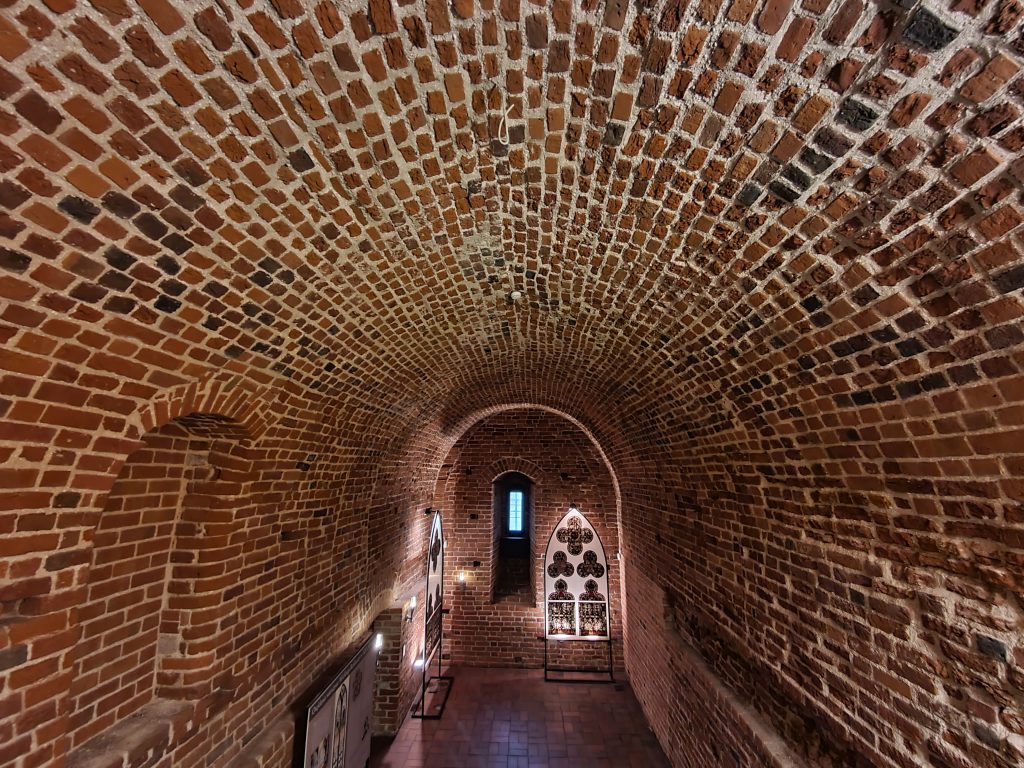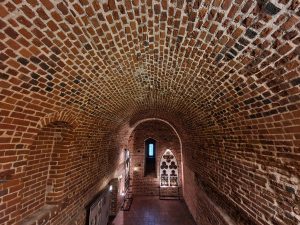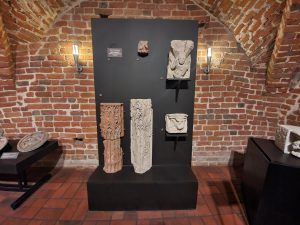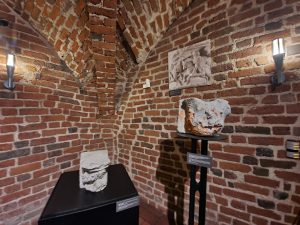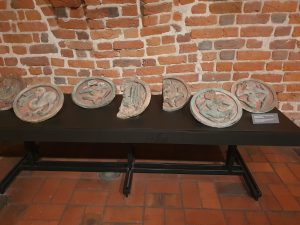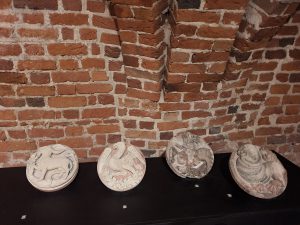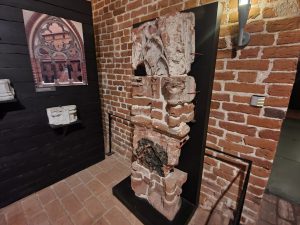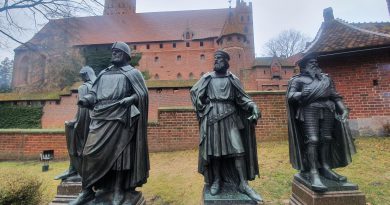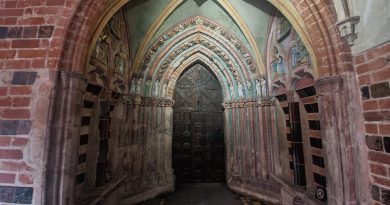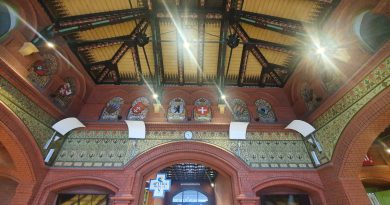Malbork – Malbork Castle (Architectural Features)
There aren’t a huge number of exhibits at Malbork Castle, not least because most had already been lost before the Second World War saw the end to most of what was left. However, towards the end of the tourist route (or the tourist route that I took, which I suspect differed from the route that everyone else took) is this collection of architectural features from the castle’s history.
These are all elements from the early stages of the castle’s construction, when the Knights of the Teutonic Order were in charge. Clicking on the above photo makes it larger, and I particularly liked the item in the centre at the top, which is a figure of King David playing the harp dating from 1300.
For completeness, the item at the top-right is a support which has the image of a monk (dating to before 1300), the two pillars at the bottom-left are vault supporters from Chapter House (dating to the thirteenth or fourteenth centuries) and the bottom-right is a vault supporter designed to look like a monster (dating to the fourteenth century).
More sections of stone dating to the thirteenth and fourteenth centuries.
Decorative pieces dating back to the fourteenth century.
They carried on the theme over the centuries, the two on the left are from the nineteenth century. The third and fourth ones along are from the fourteenth century, although I think the one on the far right is from another castle.
I was intrigued by these, as although I had nearly three hours walking around a castle looking at a lot of stone, it was hard to know what was old and what was more modern. Even before the reconstruction after the Second World War there had been much change over the centuries, but it’s known that these two stone and brick structures were from the second quarter of the fourteenth century. The sections are all from the ambulatory and would have been in this building in the first 75 years of its existence. Incidentally, these are also some of the earliest bricks (if we ignore the Romans), the practice of building in brick in this style reached this part of Northern Europe in the twelfth century.
To see such early bits of stone still in the castle I find in many ways quite assuring. The castle has changed hands on numerous occasions and it’s been in different countries over the centuries. Even just 100 years ago this castle , then Ordensburg Marienburg, was actually on the border between Germany and Poland, the section of East Prussia next to the Polish corridor. Anyway, they might just be bits of stone, but I thought that they were quite interesting bits of stone.

